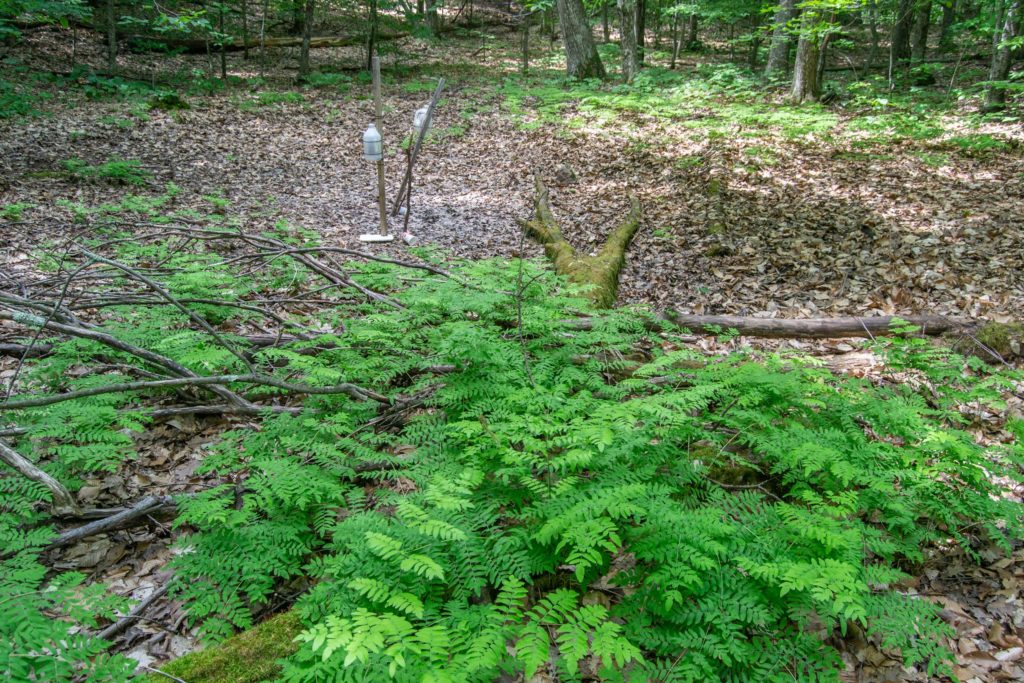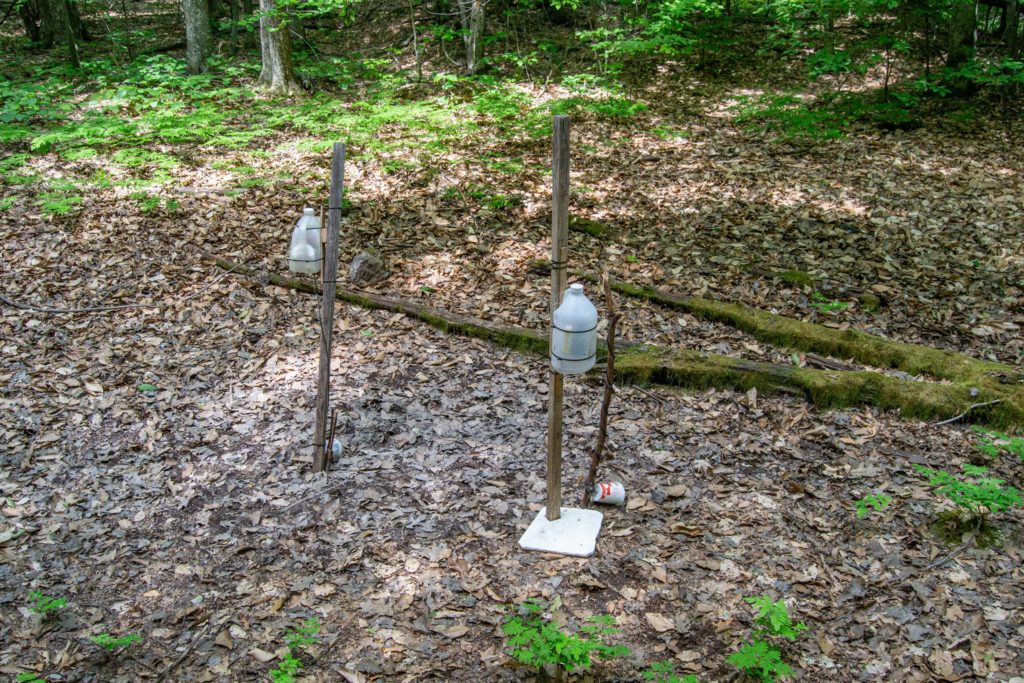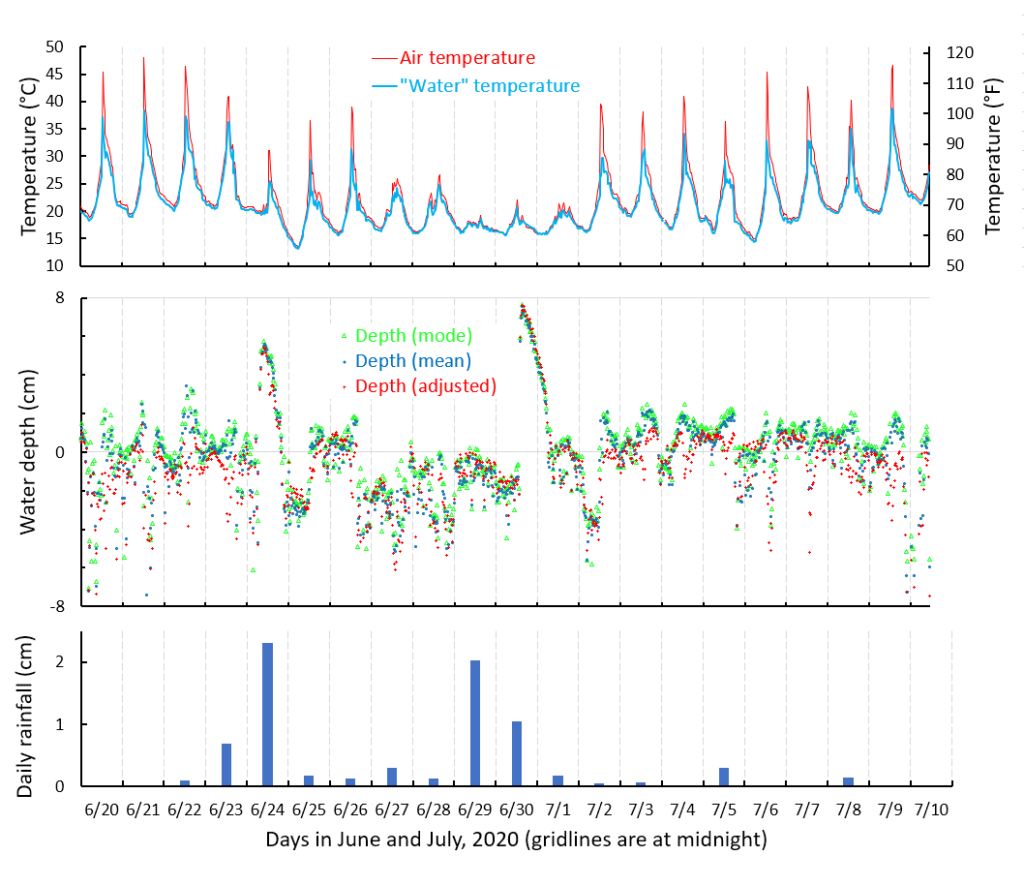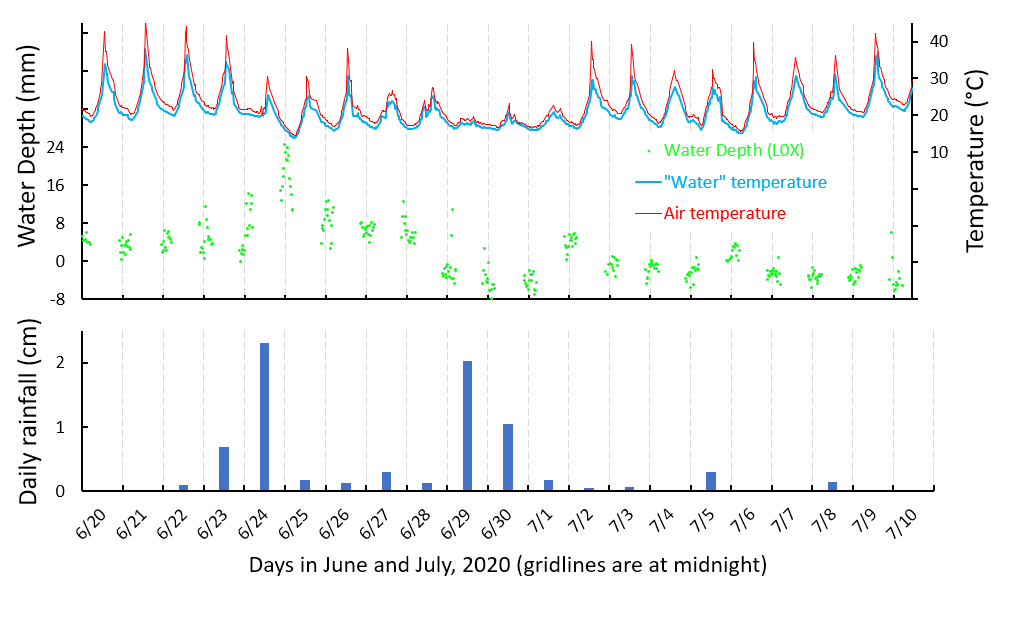It has been three weeks since I last visited the vernal pool and installed the Version 4 (Ultrasonic) water depth data-logger. I was curious to learn whether the new logger was working and decided to collect the data and replace the batteries in both loggers — the Version 3 logger (laser rangefinder) had also been running since the last visit.

The pool was dry when I last saw it and there have been only a few rainy days since then. On this visit it looked about the same as it did on June 19 but there was no sign of the dead tadpoles and no foul odor. The only thing that was wet was one mass of spotted salamander eggs which somehow retained water after being exposed to the air three weeks earlier.


I assumed that a puddle had formed near the two data loggers on one or two days during the last few weeks when summer rainstorms had passed through. If so, the Version 4 logger (at the low point in the pool) should have recorded the event and the Version 3 logger would have recorded it a little later if the puddle grew big enough. The logged data were not as tidy as I had imagined.

The ultrasonic rangefinder does a poor job measuring the distance down to a surface covered with dead leaves. The results were sometimes off by 4 cm or more (Figure 1, middle). The error is apparently not systematic but related to noise associated with bouncing sound off of that soft, rough surface. At two times in the record, June 24 and 30, it appears that a puddle formed and the ultrasonic rangefinder detected the shorter distance down to a water surface. Bouncing sound off of a water surface produces much cleaner data and the rapid rise and fall of the water level is well documented during the short life of the puddle.
There is no obvious signal for the puddle in the temperature data (Figure 1, top). The water temperature sensor was not touching the ground surface but was suspended an inch or so above it. So the sensor might not have been completely submerged. The sensor was reinstalled lower during this visit so subsequent puddles would be better documented.

The laser rangefinder in the Version 3 data logger made less noisy measurements (Figure 2, upper) than the Version 4 logger (note that the y-axis scale for water depth is cm in Figure 1 and mm in Figure 2). The greater precision is due in part to the white Sytrofoam target under the Version 3 logger, and maybe in part to the absence of daytime data (there is some unexplained diurnal variation in measured depth with the Version 4 logger, see Figure 1, middle).
Water depth results from the Version 3 logger suggest that the growing puddle was documented on the night of June 24 but not on June 30 (Figure 2, upper). Although the Version 4 logger recorded higher water on June 30 than on June 24, the Version 3 logger recorded only the June 24 puddle. It is possible that the June 30 peak was missed by this logger because measurements cannot be made during daylight.
As with the Version 4 logger, there is no obvious signal in the temperature data for the growing puddles. Temperature is recorded every 30 minutes day and night by both loggers. The Version 3 sensor was right at the level of the pool bottom and should have responded if the puddle reached it. It is possible that the water temperature is not very different from the air temperature during these summer storms and the signal is therefore subtle or absent.

The June 24 water depth maximum was recorded about 14 hours later by the Version 3 logger than by the Version 4 logger. A delayed start to the water level rise is expected because the pool bottom at the Version 3 logger is slightly higher, but the peak flood should be simultaneous at both places. A half day difference in the recorded time of peak water demands an explanation. This inconsistency could hold important clues about the workings of the system, but it has me stumped.
“Tide goes in, tide goes out — you can’t explain that.”
Bill O’Reilly
I think the water depth measurements will be much tidier when the water depth is always greater than zero. The ultrasonic rangefinder seemed to document with good precision the few hours there was a puddle under it (Figure 1, middle). I am encouraged that the Version 4 logger by itself will provide good results and the Version 3 logger can be retired. I hope that will be confirmed when we finally get some real rain again.
